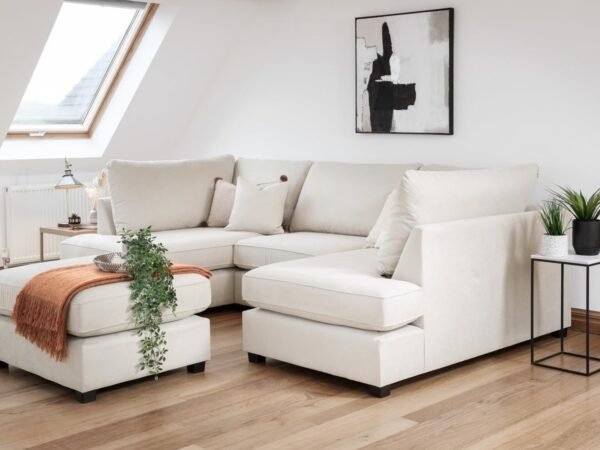As we age or face mobility challenges due to injury, illness, or disability, finding the right mobility aid can significantly improve our quality of life. A mobility aid provides the support needed to move around safely, maintain independence, and stay active. However, with the wide range of options available, selecting the right aid can feel overwhelming. From canes to walkers, wheelchairs, and scooters, each device is designed to cater to specific needs. The key is understanding which mobility aid suits your lifestyle, health condition, and physical abilities. This article provides essential tips for selecting the right mobility aid to help you make an informed decision.
Assess Your Mobility Needs
The first step in selecting the right mobility aid is to assess your specific mobility challenges and determine the type of mobility assistance you require. Understanding your condition and limitations will guide you in choosing a device that provides the right level of support. Ask yourself:
- Do you need mobility assistance to help with balance?
- Are you dealing with temporary or permanent mobility issues?
- Do you need an aid for occasional support or daily use?
- Can you stand or walk for short distances, or do you require full-time assistance?
For minor balance issues, a cane may suffice. If you need more support but can still walk, a walker or rollator might be more appropriate. For those who are unable to walk, a wheelchair or mobility scooter could be the best solution.
Consult a Healthcare Professional
Before purchasing a mobility aid, consult with your doctor or physical therapist. These professionals can evaluate your physical condition and recommend the most suitable aid for your needs. They will consider factors such as your strength, endurance, and balance, as well as any medical conditions that may impact your mobility. A healthcare professional can also suggest training or physical therapy to help you adapt to using a new device effectively and safely.
Consider the Type of Mobility Aid
There are several types of mobility aids available, each designed for different levels of assistance. Here’s an overview of the most common options:
Canes: A simple, lightweight option that offers support for minor balance issues. They come in various styles, including standard, offset, and quad canes, which provide more stability.
Walkers: Walkers provide more support than canes and are ideal for people who need help with balance and stability. Some walkers have wheels (rollators) for easier movement, while others are designed to be lifted for each step.
Wheelchairs: Wheelchairs are suitable for people who cannot walk or need to conserve energy. They come in manual or powered versions, depending on the user’s ability to self-propel.
Mobility Scooters: Ideal for individuals who have difficulty walking long distances but still want to maintain independence. Scooters are battery-powered and easy to navigate in various environments.
Crutches: Crutches are commonly used for short-term mobility assistance, such as recovering from an injury. They transfer weight from the legs to the upper body, providing temporary support.
Each device has its benefits, so it’s essential to choose the one that aligns with your specific mobility needs.
Focus on Comfort and Fit
Comfort is a crucial factor when selecting a mobility aid, as you’ll likely be using it regularly. If your device is uncomfortable, you may avoid using it, which can lead to further mobility issues. When trying out different options, ensure the aid is properly fitted to your height and weight. For example, canes and walkers should be adjusted to the correct height to prevent strain on your back and shoulders. Wheelchairs and scooters should offer good cushioning and support, especially if you’ll be sitting for extended periods.
If you’re unsure about the fit, many stores and suppliers offer free consultations or fittings. This can help you avoid purchasing an aid that doesn’t meet your needs.
Think About Portability and Storage
If you plan to travel or frequently move your mobility aid, portability and storage are important considerations. Canes and folding walkers are generally easy to transport, while wheelchairs and scooters can be bulkier. Many modern mobility aids are designed with portability in mind, featuring lightweight materials and foldable frames.
Consider how often you’ll need to move or store the aid, especially if you have a smaller living space. Some scooters are designed to break down into smaller parts for easier transport in vehicles. Others are more challenging to disassemble and may not be suitable for frequent travel.
Evaluate Your Environment
Your home and surrounding environment play a significant role in choosing the right mobility aid. Consider whether your home is mobility-friendly or if modifications are necessary. For example, narrow doorways may limit the use of wide wheelchairs, while uneven surfaces can be difficult to navigate with certain walkers or scooters.
If you plan to use the aid outdoors, consider the terrain you’ll be navigating. A cane or walker may work well on flat, smooth surfaces, but if you’ll be walking on gravel, grass, or uneven terrain, you may need a more rugged device, such as a rollator with larger wheels or an all-terrain scooter.
Conclusion
Choosing the right mobility aid is an important decision that can greatly impact your day-to-day life. By carefully assessing your needs, consulting a healthcare professional, and considering factors like comfort, portability, and cost, you can select a device that will help you maintain independence and improve your quality of life. Take your time, try out different options, and choose the aid that best suits your lifestyle and mobility challenges.













